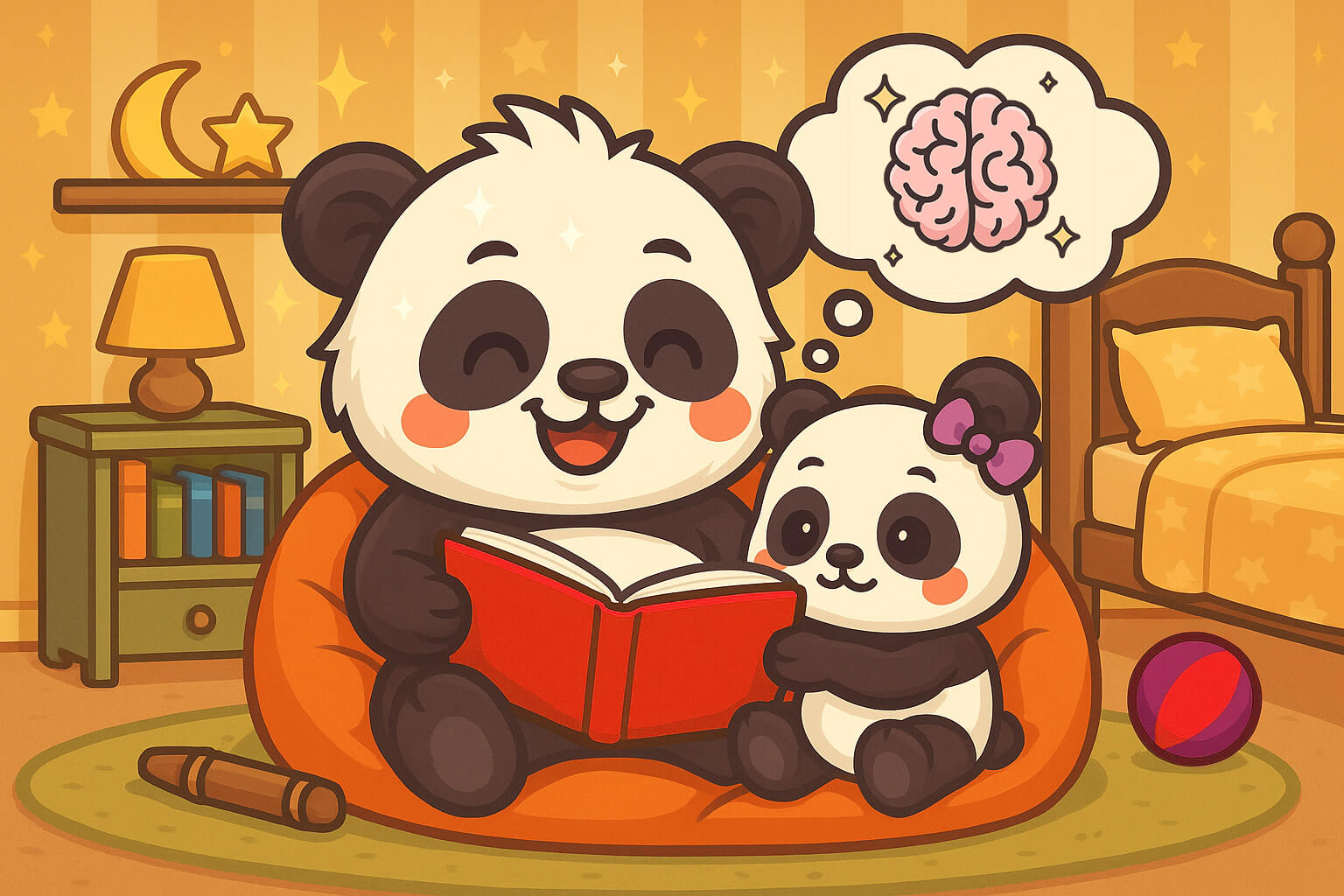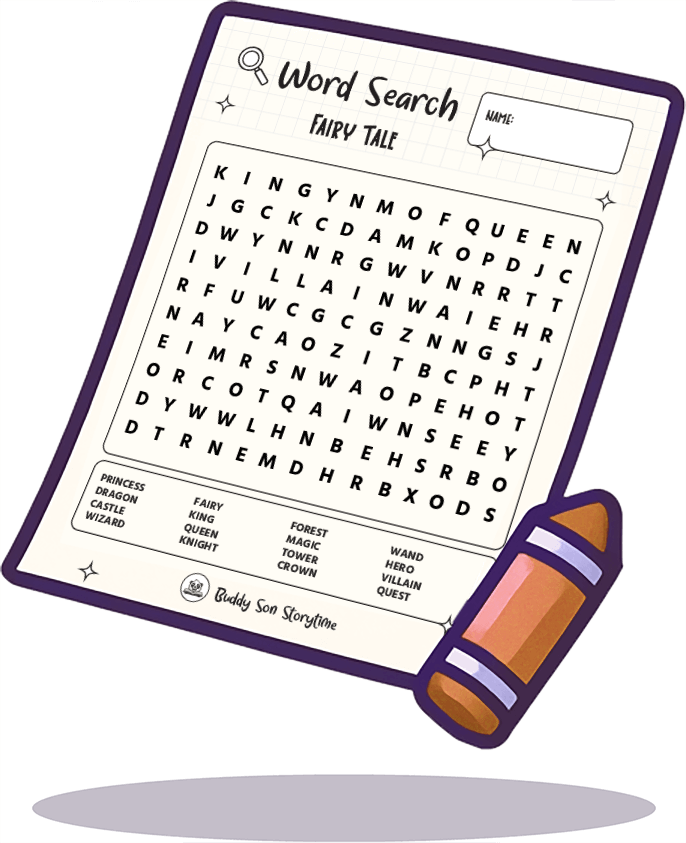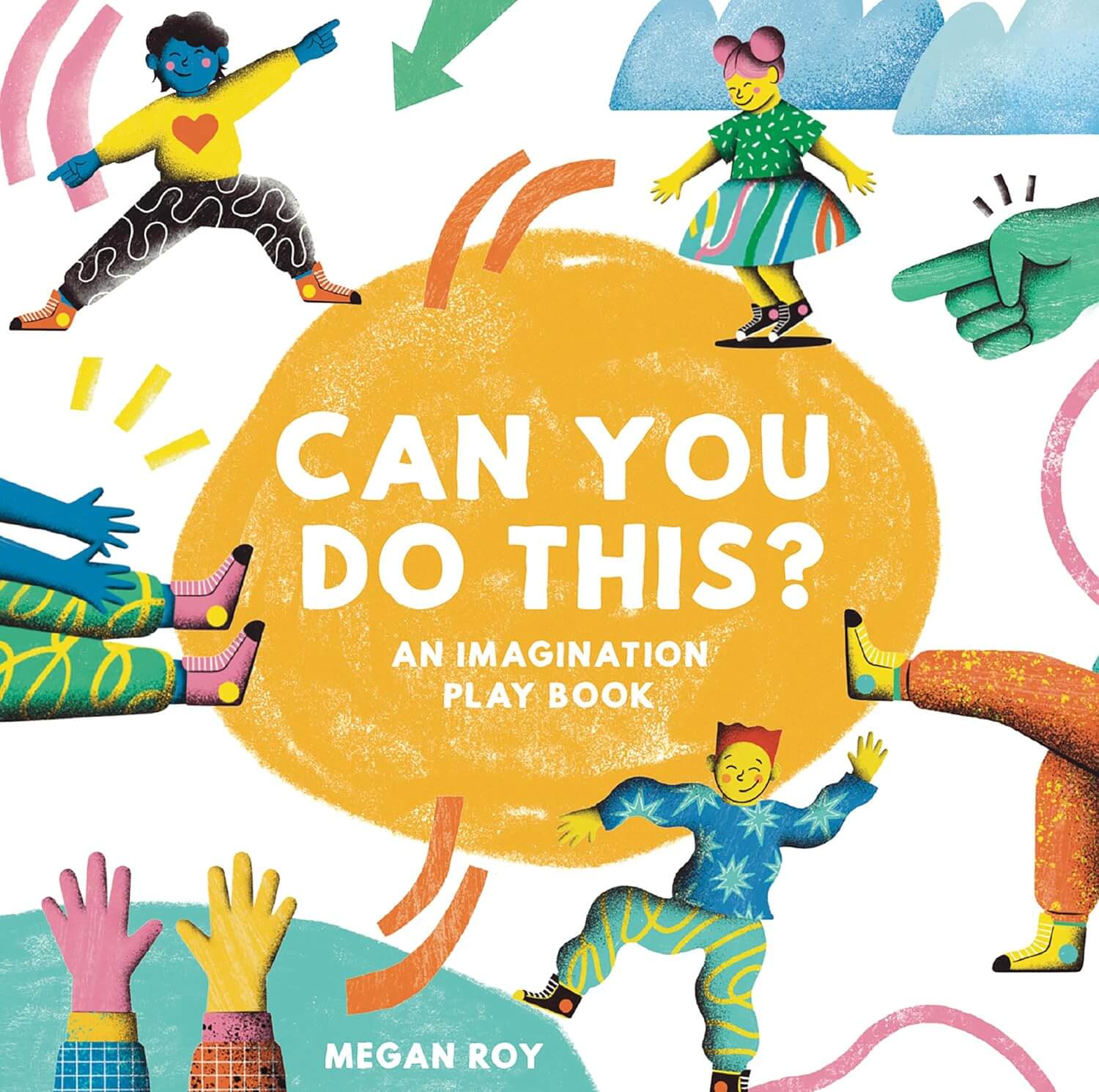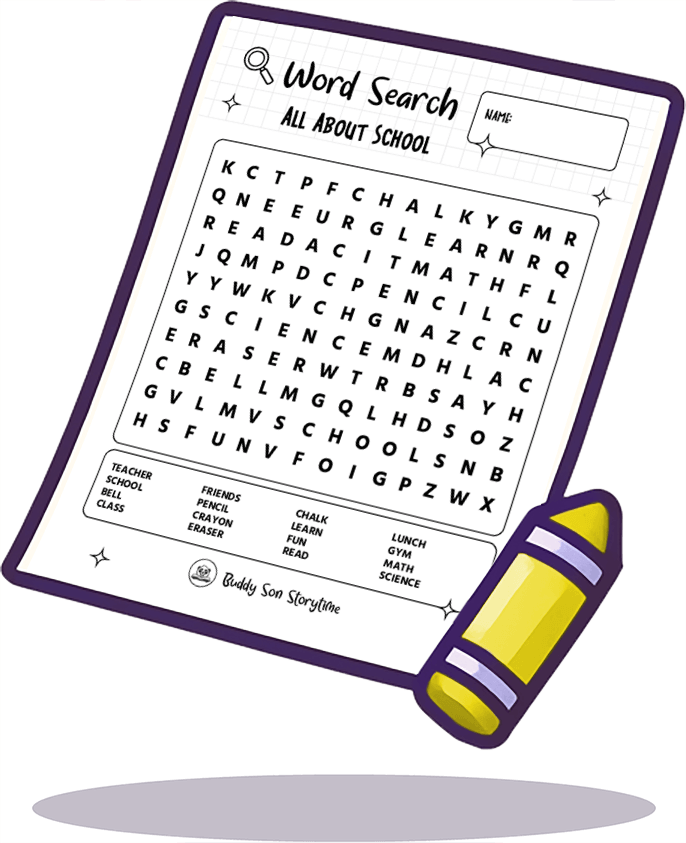Most parents and teachers know that reading aloud helps kids learn new words. But what many don’t realize is just how deeply it shapes the brain. From building empathy to improving memory and focus, storytime does more than entertain—it rewires the way children think and connect with the world.
The Brain on Storytime
Neuroscientists at the University of Michigan and Cincinnati Children’s Hospital have studied what happens in a child’s brain when they listen to a story.
Research led by Dr. John Hutton found that when preschoolers listen to stories, the regions of their brains tied to imagination and language “light up” with activity—proof that reading aloud builds deep comprehension and visualization skills.
Here’s what scientists discovered:
- Brain scans show stronger activity in regions tied to language processing and mental imagery, meaning kids learn to visualize what they hear.
- Children who regularly listen to stories being read aloud develop stronger narrative comprehension. They can predict what might happen next, grasp cause-and-effect, and build empathy through characters’ emotions.
- Listening to stories lights up multiple regions of the brain, not just one. That kind of activation is rare and powerful for early development.
Every time we read aloud, we’re strengthening their imagination, empathy, and focus. All without a single worksheet.
A Storytime Moment I’ll Never Forget
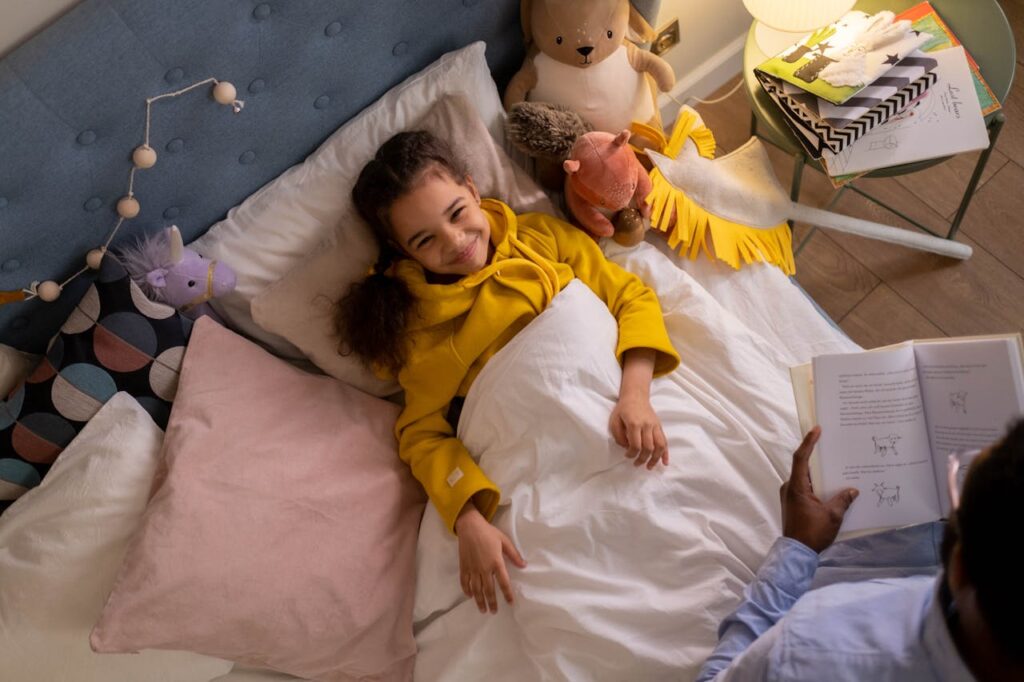
One night, I read one of Aesop’s fables to my kids—no pictures, just words. They were lying in bed, cozy and calm, listening intently as the story unfolded. Every so often, one of them would interrupt with a question, trying to clarify what they were picturing in their heads.
Afterward, they’d tell me whether they liked the story or not, and why. We loved that part. They weren’t just listening; they were reviewing, analyzing, and thinking critically about what made a story “good.”
The next night, they asked for another fable. And another. Even when I was exhausted, they were eager to hear more. It struck me how powerful storytelling alone could be. No pictures. No sound effects. Just words forming pictures in their minds.
A week later, they could still recall the story in vivid detail, sometimes even better than I could. That’s when it really hit me: this quiet bedtime routine was shaping their memory, attention, and imagination in ways no screen could.
The Emotional Connection
Beyond brain science, there’s something almost magical about reading together. That quiet closeness builds a sense of safety and belonging. Experts call it “shared attention”, when two people focus on the same thing, their brainwaves literally sync up.
That’s one reason storytime routines often become kids’ favorite part of the day. The book becomes more than a story—it becomes a moment of comfort, connection, and love.
From a Parent’s Point of View
When I read aloud to my kids, I feel like both a narrator and performer—bringing a mini play to life. I do all the voices, try to paint pictures in their minds, and keep them entertained while still helping them learn.
If they’re sitting beside me, I’ll point to each word as I read. The older kids can follow along, and the youngest starts to understand that those little black marks on the page mean something. She knows I’m not making things up. The story unfolds in order, one line at a time, and that every part connects.
It’s calming, being close to them like that. Sometimes I’m tired, and there are nights when the book they choose isn’t exactly my favorite. But those are the nights when I have to turn up the performance, make the voices bigger, add sound effects, and keep everyone engaged (or else I’d fall asleep)!
“Storytime is our end-of-day wind-down —a small moment of calm, laughter, and connection before sleep.”
At the end of the day, it’s one of the best routines we have. Storytime helps them settle, unwind, and prepare for sleep. And it’s another chance to snuggle close and share something meaningful before the day ends!
What Teachers See in the Classroom
Teachers consistently notice that kids who are read to regularly:
- Pay attention longer.
- Follow multi-step instructions better.
- Show more curiosity and imagination in creative writing.
When children are used to hearing stories, they naturally internalize rhythm, structure, and vocabulary—the building blocks of literacy.
Making the Most of Storytime at Home

You don’t need a perfect voice or a fancy collection of books to make storytime powerful. Research suggests it’s less about how you read and more about how engaged your child feels.
Try these simple tweaks:
- Pause for predictions: “What do you think happens next?” activates critical thinking.
- Talk about feelings: “How do you think the little pigs feel right now in the brick house?” builds empathy.
- Let them retell it later: strengthens recall and comprehension (just like our kids did with Aesop’s fables).
- Keep it consistent: Even 10 minutes a night builds long-term habits.
Final Thoughts
Storytime might look like a simple bedtime ritual, but inside your child’s brain, something extraordinary is happening. With every page told in the story, or every word, you’re strengthening attention, empathy, language, and memory.
Those moments of connection, where a story sparks a question or a giggle or a thoughtful silence, are more than bedtime traditions. They’re shaping the foundation of how your kids think, feel, and imagine. So go ahead, grab a book during bedtime, snuggle up, and let their imaginations explore in wonder.


